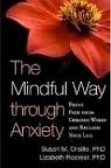Let me begin by acknowledging that Gratitude and I got off to a rocky start. As a child, gratitude often meant being reminded how lucky I was to have a loving family, a roof over my head, an education, etc. I was taught to be polite, to say “thank you” for gifts, whether I liked them or not, to express appreciation for whatever was done for me or given to me.
I remember one Saturday evening in particular. I was about 11 years old and my mother prepared chicken livers for dinner. As we gathered around the table, I expressed my dislike (perhaps, even contempt) for the main dish, to which my father replied that I should be grateful for this nutritious food and be glad that I was not one of the starving children in (you are free to select an appropriate third world country of the 1950s). After we said Grace, he went on to inform me that I would have plenty of opportunities to learn gratitude for this delicious meal because it would be served every Saturday night from then on.
Fortunately (and for this I was truly grateful), his threat was short-lived and it was only a few weeks before we returned to more appetizing meals like meatloaf. Not surprisingly, I never did develop a liking for chicken livers, despite my parents’ best efforts. What I do have now, some 50 years later, is a deep and loving appreciation for the childhood meals we shared in our family kitchen, my mother’s commitment to providing us wonderful home-cooked meals, and my parents’ desire that I learn to value what was given to me, even if I didn’t always like it.
Developing gratitude has been a life long journey, with an experience of it that has grown deeper over time. I am often reminded of the Joni Mitchell song “Big Yellow Taxi.” Its refrain is “Don’t it always seem to go that we don’t know what we’ve got til it’s gone….” For many of us, gratitude grows from an awareness of what we’ve lost, or what we stand to lose. For example, how much easier is it to appreciate good health after recovering from a serious accident or illness? Or to value electricity after a lengthy power outage? Or to feel gratitude for our remaining friends and family after one of them dies?
Loss is not always a precursor to gratitude. It is possible to appreciate life’s gifts without it. For instance, think of how children squeal with glee when experiencing a winter snowfall (and the subsequent day off from school). Perhaps you can remember a trip to the beach and seeing the sunset across the water. Or you may be able to recall the excitement and anticipation of a new romance.
However, learning gratitude through loss is an opportunity to deepen our understanding and appreciation of life from a new perspective. Shakti Gawain notes that it is difficult to get in touch with our gratitude when life is hard and we are going through a difficult time. However, with patience and perspective, these “healing crises” can provide meaning and purpose in our life’s journey. For instance, the sudden loss of someone dear to us can show us how “life turns on a dime” and remind us of the fragility and beauty of each moment we have. The unexpected loss of employment can force us to re-evaluate our career goals and options, perhaps leading us to a more rewarding or fulfilling work. Or a reduced level of income may force us to alter our lifestyle, finding a way to live more simply. We can, in the most difficult of times, learn to recognize – and appreciate — our greatest gifts and assets, as well as our “growing edges” – the lessons that we are be challenged to learn. In short, we can take these painful experiences and let them soften and expand our hearts, or harden and contract them.
According to Julie Keene, minister and author, gratitude is closely connected to trust. “In order to be thankful for everyone and everything in my life, I need to trust that the Universe makes sense, that everything my soul has chosen to experience this lifetime has been for my ultimate Highest Good.” Once we are able to appreciate whatever life brings us, it is easier for us to then begin living in a place of contentment and gratitude. Our heart is able to find and dwell in a place of joy.
As I consider what I have written so far, I must admit it looks deceptively simple, a bit like “A Guide to Enlightenment in three short paragraphs.” Finding and living in a place of gratitude is not instantaneous nor without some effort. But be assured, it brings immense rewards.
Benefits of Gratitude as a Practice
There are more than a few reasons to incorporate more gratitude into our lives. Having an “attitude of gratitude” causes us to interact with others from a place of fullness. They are attracted by our energy and feel our appreciation. On the other hand, when our glass is “half empty,” we emit a negativity that tends to repel others and we experience less support.
James Eubanks, an author, columnist and astrologer, notes that it is impossible to feel worry, anger, depression, or any negative emotion in the presence of genuine gratitude: “The practice of gratitude saves us from our painful human storyline, for it requires us to look deeper into our lives and the people around us. The surface rarely holds depth; rather, it obscures it. Gratitude enriches and deepens the colorful fabric of our lives by allowing us to see more.”
Cultivating gratitude has been linked to better health, sounder sleep, less anxiety and depression, higher long-term satisfaction with life and kinder behavior toward others. In a recent experiment at the University of Kentucky, students who turned in an essay were either praised for it or given harsh criticism. Then each student was allowed to play a computer game with the person who gave them the evaluation. The winner could administer a blast of white noise to the loser. Those who had received criticism about their essay retaliated against their opponent by giving an especially loud blast – much louder than those given by students receiving positive feedback.
However, an interesting exception occurred among students who had been instructed to write their essays about gratitude. Even if their feedback was negative, they didn’t feel compelled to blast their opponents at a higher volume. The researchers viewed the results as an indication that gratitude also reduces aggressive behavior.
Suggestions for Practice
Gratitude grows best when it is cultivated. John Kralik, a California attorney and judge, has written about his experience of gratitude in a touching book, A Simple Act of Gratitude: How Learning to Say Thank You Changed My Life. He had reached a point in his life when he felt as if he had lost almost everything that mattered to him. His business was failing, his second marriage was ending, his living conditions were undesirable and he felt distance between himself and his two older children. He was angry and despairing and out of shape. On New Year’s Day he was struck by the thought that his life could be better if he could find a way to focus on the things he had, rather than those he had lost. He made a commitment to himself to write 365 thank you notes over the next year. The resulting story is an endearing and encouraging account of the personal changes he experienced in that process.
Another way to begin a practice of gratitude is with what Robert Emmons of the University of California calls “gratitude lite.” It involves keeping a journal listing five things for which you feel grateful. The list is brief – only one sentence per item – and is done only once a week. The research he did with Michael McCullough of the University of Miami showed that after two months, there were significant changes among the journal keepers, compared with a control group. They felt more optimistic and happier. They reported fewer physical problems and spent more time working out.
One suggestion for bringing more gratitude into your life is planning a “gratitude visit.” Psychologist Martin Seligman recommends writing a 300 word letter to someone who changed your life for the better. Be specific about what the person did and how it affected you. Then deliver it in person without telling the person in advance what the visit is about. When you get there, read the whole letter slowly and out loud to the other person. According to Seligman, if you do this, within a month you will feel happier.
Other possibilities include keeping a gratitude calendar which emphasizes different blessings in each month; performing a service or volunteering to help someone; saying “thank you” often and with sincerity.
One especially lovely practice is the “Hugging Meditation” described by Buddhist monk Thich Nhat Hanh:
- Hug someone three times, breathing in and out with awareness;
- On the first breath in and out, both of you think about how, at sometime, you don’t know when, you will no longer be here;
- The second time, focus on how, at sometime, the other person will no longer be here;
- The third time, truly take in that you are both here now, together in this precious moment.
Finally, if you should find your gratitude aptitude getting especially challenged, remember what Buddha wrote:
“Let us rise up and be thankful,
for if we didn’t learn a lot today, at least we learned a little,
and if we didn’t learn a little, at least we didn’t get sick,
and if we got sick, at least we didn’t die;
so, let us all be thankful.”
Suggested Reading
Kralik, John. A Simple Act of Gratitude: How Learning to Say Thank You Changed My Life. New York: Hyperion, 2011.
Hay, Louise L. Gratitude: A Way of Life. New York: Hay House, 1996.
Ryan, M.J. Attitudes of Gratitude: How to Give and Receive Joy Every Day of Your Life. San Francisco: Conari Press, 1999.





You must be logged in to post a comment.